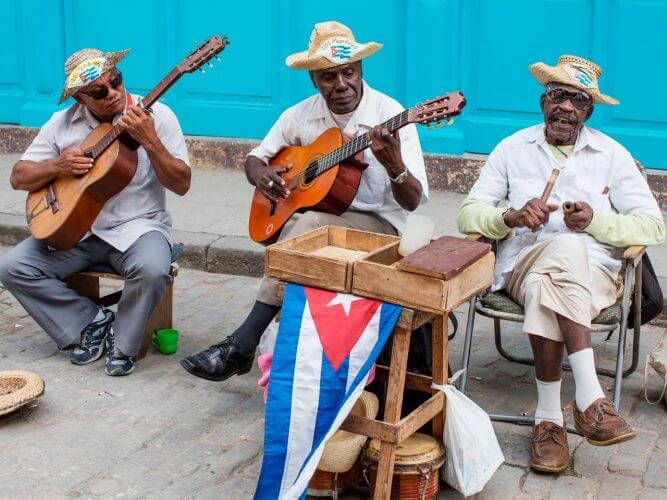Does your country have an internationally recognised style of music that is uniquely yours? Could someone hear a few bars and immediately know what they’re listening to? There are very few places in the world that can make this claim. A lot of truly local music originates from indigenous populations and ethnic minorities, some of which then become mainstream and internationally known. A lot of musical styles are inherently generic, with the only distinction being the language in which a sappy pop song is performed. The music of Cuba is different. It is undeniably internationally acclaimed, with the popularity that goes with it. In some countries it might be considered a niche, although it’s still known. It is defiantly untouched by modern influences, which is not to say that it has not evolved over the ages. Any visit to Havana is going to have a memorable soundtrack, since you’re going to hear hauntingly beautiful music played throughout the city. Music is a way of life in Cuba, and upon your return home, chances are that you’ll be listening to a lot more salsa music than you used to. So what are some of the types of music that will lodge itself in your memory when you visit the Cuban capital?
Rumba
There are many interpretations of the use of the word “rumba” and its subsequent musical style. One theory is that the word is derived from a term meaning “uproar” which can logically be associated with often frenetic style of Cuban rumba. Rumba can also be a colloquial term for party, which was once used in Cuba. Like in much of the new world, Cuba was home to a number of slaves, forcibly removed from Africa. These slaves brought their musical styles with them, and rumba is believed to have its roots in the music that slaves played amongst themselves. An earlier, raw form of contemporary rumba was played amongst slaves in Cuba in the 1800s, by which time it had already become intermingled with the Spanish and Caribbean cultures of the island. Slavery was abolished in Cuba in 1886, meaning that the music then spread freely throughout the country and was no longer limited to a self-contained minority. While salsa is of course more prevalent in Havana, rumba is still widely played, and its sensual beats can make for an interesting contrast with salsa. It’s also arguably easier to dance to.
Son Cubano
Son Cubano owes its origins to rumba, and can be traced back to when the slaves of Cuba were given their freedom. Slaves from urban areas and those who had worked in rural areas came together for what was essentially the first time, and so their two similar and yet distinctive styles of rumba came together as well. This mingling of the two styles of rumba gave birth to a new style of music which has become known as Son Cubano. This style of music achieved mainstream recognition by the early 1900s, and a number of popular recordings of Son Cubano can be traced back to this era. It could be argued that Son Cubano became a part of Cuban cultural heritage in the 1920s. Radio broadcasts on the island began in 1922, allowing Son Cubano to be shared with those who might not have previously had access to the recordings. The style did in fact have a shelf life in terms of being mainstream, since the public’s tastes had moved on by the late 1930s, meaning that Son Cubano was more of a niche. While son is a style unto itself, its influences can be heard in contemporary Cuban music.
Salsa
While it is probably the best-known style of Cuban music, salsa as we know it arguably developed outside Cuba before being reintroduced to its spiritual home. A night tour in Havana is going to take in a number of different salsa clubs, so please ensure that you’re well-rested before venturing out for the evening (and the rest of the night, and much of the following morning) since Havana is a town that knows how to party. Salsa is derived from Son Cubano (which was derived from rumba), and is an amalgamation of styles that were combined in the dance halls of New York in the 1940s. Cuban music was exceptionally popular at the time (more so than it is now), and Cuban migrants plied their uptempo variations of traditional Cuban music for appreciative audiences throughout the US (and indeed, the world). The salsa sound was hardly revolutionary in Cuba, since it had evolved from different styles of traditional Cuban music, and it wasn’t until well into the 70s and 80s that contemporary salsa music became popular in Cuba. It has of course been claimed as their own, and why shouldn’t it be? The salsa music you will hear in Havana these days is authentic and of course contains definite musical nods to the style’s precursors.

